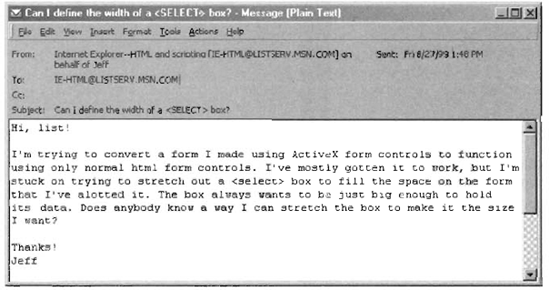8.5. Discussion groups
8.5.1. Discussion groups
Discussion groups provide an opportunity for ongoing electronic conversations among a group of people. One person posts a question or an opinion. Others read it and attach replies. Then still others add comments on the replies. The sequence of commentary can go on indefinitely.
8.5.1.1. What are discussion groups?
Unfortunately, the names e-mail list, mailing list, bulletin board, news server, newsgroup, net news, forum, discussion group, and list server are used somewhat interchangeably to describe different forms of message exchange. I cannot remedy that linguistic overlap, but I can tell you how I use terms in this book. I divide discussion groups into three main categories: e-mail lists, newsgroups, and forums.
8.5.1.1.1. E-mail lists
E-mail lists let members of the list broadcast e-mail messages to all other members of the list. (E-mail lists are often called list servers, listservs, or just mailing lists.) An e-mail list server maintains the list of subscribers to the list, in WBT typically the members of a class. When a message arrives, a copy is dispatched to every member of the list.
Most course designers tell me they are phasing out e-mail lists in favor of threaded forums or newsgroups.

Here is a message posted to an e-mail list that discusses HTML issues affecting the Internet Explorer browser.
The main advantage ...
Get Designing Web-Based Training: How to Teach Anyone Anything Anywhere Anytime now with the O’Reilly learning platform.
O’Reilly members experience books, live events, courses curated by job role, and more from O’Reilly and nearly 200 top publishers.

